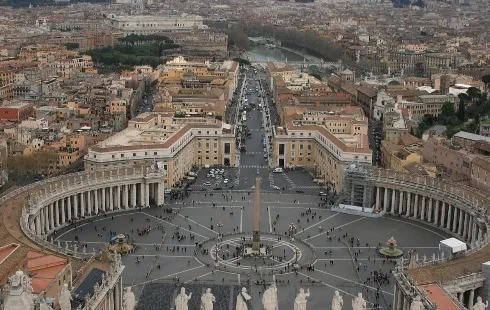
X Money: Musk's Platform Eyes Credit Card Services
Section: News
Hurricane Ida, classified as "extremely dangerous," made landfall in the U.S. state of Louisiana at noon on Sunday (local time), and just one hour later the New Orleans Metropolitan Emergency Operations Center reported "widespread power outages." The interactive map of the local utility Entergy showed about 170,000 households without electricity. According to the website Poweroutage.us, 233,000 customers were without power across the state.
The center of the storm hit the coast southwest of New Orleans near Port Fourchon with a magnitude four of five coming from the Gulf of Mexico, the National Hurricane Center (NHC) said. It said the hurricane carried maximum wind speeds of about 240 kilometers per hour as it reached the coast. The state and the city of New Orleans should expect heavy rain, a "life-threatening storm surge," catastrophic wind gusts and prolonged power outages, it said. "Sustained wind gusts" of more than 110 kilometers per hour were reported from New Orleans this afternoon. "We are still not at peak and wind speeds continue to increase," the city's Situation Center warned Sunday afternoon via Twitter.
The extent of the damage and whether there are any fatalities cannot be determined at this time. According to Louisiana Governor John Bel Edwards, rescue workers will not be able to reach the areas worst affected by storm surges until Monday morning. As long as Ida is still raging over the areas near the coast, it is too dangerous for rescuers, he said. Initially, the region will probably only be accessible by helicopter, he said. Most of the residents there, however, should have made their way to safety in time, he said.
In the two days leading up to the storm's arrival, officials had urgently appealed to residents of the U.S. Gulf Coast to get to safety. Governor Edwards activated the National Guard with 5,000 troops. The Emergency Management Agency flew aid workers and supplies to the region, and the Coast Guard stationed numerous helicopters and boats for the upcoming rescue mission. All flights to New Orleans were canceled Sunday. Miles of traffic jams formed on the highways, and some gas stations were unable to provide fuel.
Ida made landfall exactly 16 years to the day after the arrival of the devastating Hurricane Katrina. Katrina had caused catastrophic damage and flooding in and around New Orleans, killing some 1,800 people. Since then, however, billions have been invested in flood protection in the region. New Orleans is therefore now better protected against flooding, but a hurricane like Ida usually brings with it extremely destructive wind gusts.
The forecast high winds, massive rainfall and storm surge in Louisiana are all "life-threatening" on their own, NHC Director Ken Graham told CNN TV on Sunday before the storm's arrival. Looking at radar images, he said, shows how "catastrophic this is going to be."
Because of the fast-approaching storm, there was no time to order a mandatory evacuation of the entire city, said New Orleans Mayor LaToya Cantrell. As a result, she only ordered evacuations of particularly vulnerable areas that are outside the levees. New Orleans is almost entirely surrounded by water - to the north is Lake Pontchartrain, to the east is Lake Borgne, and to the south are the wetlands along the mouth of the Mississippi River. The NHC warned of a "life-threatening" storm surge of nearly five feet. Nearly four meters is expected at Lake Borgne, and just over two meters at Lake Pontchartrain, it said. Flood and tornado warnings were also in effect for parts of neighboring Mississippi and Alabama because of the hurricane. Curfews were imposed in several counties.
Gov. Edwards said hospitals near the coast could not be evacuated despite the hurricane because there were too many Corona patients. Currently, 2450 patients are being hospitalized for Covid-19 in the state of 4.6 million, he said. There is no longer capacity in Louisiana and neighboring states to accommodate additional patients, he said. Despite generators, prolonged power outages are a major threat to the facilities, he said.
Ida is expected to weaken over land first and move northeast into Mississippi and Tennessee on Monday.
Image by David Mark

Section: News

Section: News

Section: Health

Section: News

Section: Politics

Section: Politics

Section: News

Section: Politics

Section: Health

Section: Health

Health Insurance in Germany is compulsory and sometimes complicated, not to mention expensive. As an expat, you are required to navigate this landscape within weeks of arriving, so check our FAQ on PKV. For our guide on resources and access to agents who can give you a competitive quote, try our PKV Cost comparison tool.

Germany is famous for its medical expertise and extensive number of hospitals and clinics. See this comprehensive directory of hospitals and clinics across the country, complete with links to their websites, addresses, contact info, and specializations/services.

Günther Uecker (1930-2025) was one of the most active, internationally successful, and beloved artists in Germany. His name is inseparably linked to the legendary Zero Group, particularly known for his nail reliefs, which are highly esteemed worldwide. Most recently, in January 2025, four...
No comments yet. Be the first to comment!